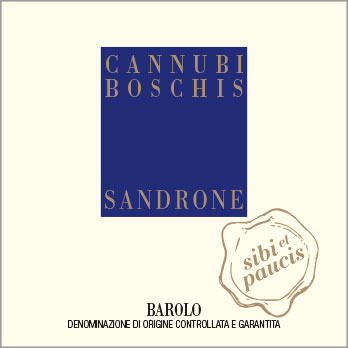
- Barolo DOCG
- Nebbiolo 100 %
- Spontaneous fermentation from indigenous yeasts
- Maceration and alcoholic fermentation in open steel tanks
- Malolactic fermentation and ageing in French Oak tonneaux of 500 liters
- The 2013 Barolo ALESTE sibi et paucis was aged a further 6 years after the original release date of September 2017 in the perfect conditions of Luciano's personal winery cellar.
- From the first vintage of 1985 Cannubi Boschis, from 2013 and beyond ALESTE
- Vineyard in the village of Barolo: Cannubi Boschis
- Alcohol: 14,5%
- Recommended drinking time:
2022 – 2038
CANNUBI BOSCHIS Barolo 2012
Tasting notes
The late-season warmth of 2012 shows in the expansive and cleanly delineated fruit of the Cannubi Boschis Barolo which shines thru on the nose and palate.
The characteristic ripeness is evident in the red fruits, roses and berries on the nose and palate.
While the wine is drinking well already, the wine will continue to benefit from a few more years of patience.
The significant, silky and ripe tannins – a hallmark of the Cannubi hillside – are deliciously long and sweet, while the forward fruit of the vintage balances out the fresh acidity.
Ratings for the vintage 2012
Wine Advocate 94 points
James Suckling 96 points
Vinous 95 points
Wine Spectator 94 points
Wine Enthusiast 94 points
Falstaff 97 Punkte
Weinwisser 19/20 Punkte
Vini Buoni d`Italia 2 stelle
I Vini di Veronelli 3 stelle
VITAE 4 viti
Kerin O'Keefe 94 points
Evolution of the vintage 2012
The bud break was early, after a cold and snowy winter. The cool conditions continued thru the end of July, and August brought heat and dryness that pushed the ripeness and fruit character of the resulting wines.
A cold winter with decent snow and precipitation replenished the groundwater reserves.The rain continued into May but the temperatures rose considerably, leading to rapid vegetative development, which corrected to some degree the uneven bud break.
Some rain in early June affected the flowering that began at the same time, but this had the effect of reducing the berry set, leading to looser clusters, which is a distinct advantage for preventing diseases.
From mid-June onwards, the temperatures were generally cool with clear skies, leading to a slow, even growth of the fruit. Until August, the vintage conditions would be considered “classic.” Temperatures began to rise and were highest in August, reaching 38°C under very dry conditions.
The combination of heat and groundwater reserves allowed the fruit to ripen fully and completely as the early autumn proceeded. Harvest was conducted under beautiful conditions of warm, clear days and cool nights into the middle of October.
Harvest took place on October 10th and 11th.